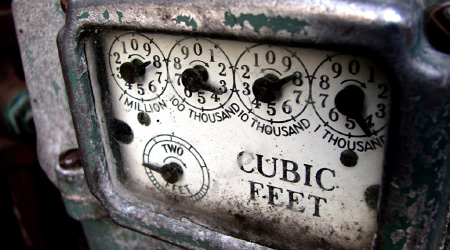Tips To Lower Your Energy Bill

Energy bills make up a significant amount of a families monthly budget. Between taking showers, watching television, running the air conditioner and all activities in between, utility costs seem to only go up and never down. With some minor modifications however, a family can work together to help minimize the most wasteful impacts of energy use to lower utility bills and free up limited financial resources for more worthwhile endeavors. Here are some tips to help you and your family save money by cutting energy use.
Tip #1 - Install A Programmable Thermostat
Most new homes come with electronic programmable thermostats but if yours doesn't currently have one upgraded immediately. Programmable thermostats are not only more accurate in sensing ambient temperature and efficiently using a houses heating and cooling systems but they have other added benefits as well. Their programmable nature allows you to decrease settings at night when everyone is asleep and during the day when the home is empty. This means you only use resources for keeping warm or cool when the home is likely to be occupied and everyone is up.
Tip #2 - Buy Energy Efficient Products
Big energy wasters tend to be leaving lights and appliances on which are not currently being used and having products which are not energy-efficient. Be sure to replace or upgrade all items which are not Energy Star efficient. The Energy Star label is federally regulated to meet stringent efficiency requirements which can help reduce electricity costs. Regardless of whether something is efficient or not, if it's not being used turn it off. Turning off lights and replacing incandescent light bulbs with compact fluorescent lights will also cut electricity use.
Tip #3 - Weatherize Your Home
Heating and cooling is probably the single largest use of resources and a house that is not properly weatherized means you are literally throwing money to the wind. Use an infrared heat sensor or smoke pencil determine where air leaks exist and plug them using expandable foam and caulking. Replace weatherstripping around doors and windows as necessary and upgrade single pane windows to double pane to increase their R-value. Once the house is properly weatherized it will retain heat in the winter and cool air in the summer more efficiently while keeping out exterior temperature extremes.
Tip #4 - Consume Less Overall
Reducing water and electricity use will also dramatically lower energy bills. Turning the water heater thermostat down to the lowest possible setting where it still accomplishes the goal is highly recommended. Many homes have a hot water heater setting much higher than is necessary. Also, replacing shower heads and toilets with their low flow alternatives can cut hundreds of gallons of water use and save money. Running the dishwasher and close washer with full loads will also reduce electricity and hot water usage since these appliances will be used less often.
Tip #5 - Focus On Outdoor Improvements
If you live in extreme climates which have hot summers and cold winters it may make sense to make changes to the exterior of your home and landscaping. If you live in the Southwest it is recommended to remove all grass and install xeriscaping using drought tolerant or resistant plants. Planting large deciduous trees will provide shade in the summer reducing the need for cooling. Planting bushes and shrubs on the wind side of your home will also buffet against winter storms.
Summary
These are only a few of the many tips available to lower your energy bills. The best solution is to use a combination of more energy-efficient application and reduced consumption. Minor behavioral changes here and there add up over time and significant savings can be realized from modifications in use. When a family works together as a team by turning off items not in use and putting on a sweater if they feel cold then energy bills go down. This frees up money for them to do more enjoyable things together instead of worrying about making ends meet.
Elsewhere on StockMonkeys.com







